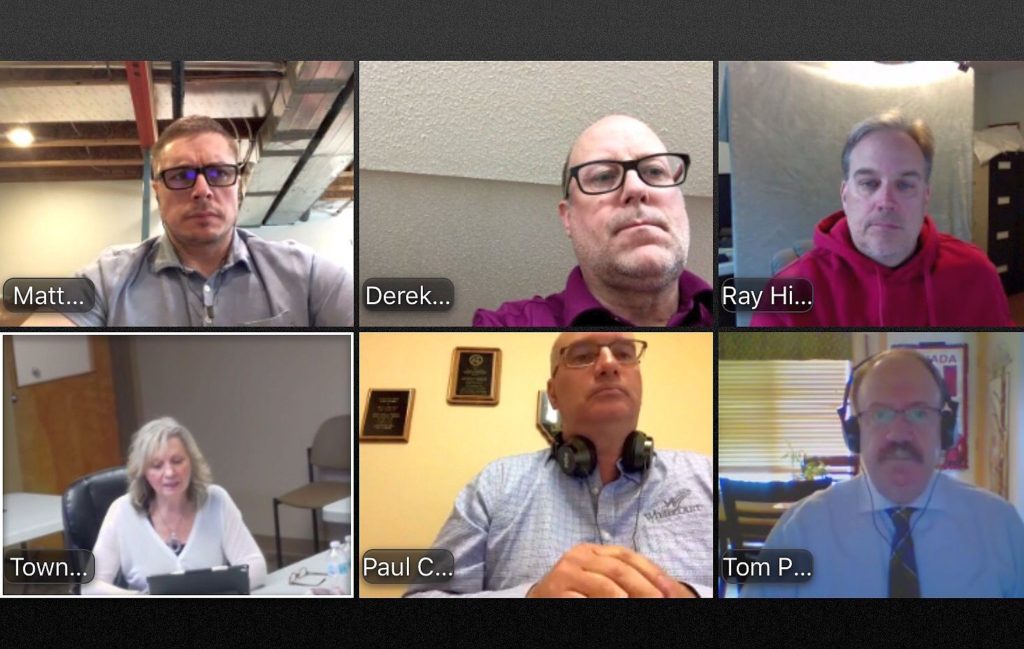
Back on December 16, 2019 council passed the 2020 interim budget, which proposed a zero percent tax increase for residents. To meet the rate, administration and community advisory boards were asked to find ways to save money and reduce spending. Since then, administration has amended the interim budget to reflect various things, including council direction, year-end project updates and updated costs to provide services. Administration is now proposing to decrease the tax rate by .7 percent for 2020 rather than keeping it at zero.
On Wednesday, April 22, members of Town Council and administration held a special electronic meeting concerning the 2020 final budget and discussed, among other things, the proposed tax rate. The meeting was held at 9:30 am and was accessible by the public through the GoToWebinar platform. Several projects that were previously planned for 2019 have been moved forward into the 2020 budget and have no impact on the budget as the funds needed for them are carried forward from 2019. In total, there were 43 amendments made to the budget, and of those, 37 had no impact on taxation, while three reduced the impact, leading to the proposed drop.
The overall surplus for the end of 2019 is 0.1 percent, which equals $35,084. The excess is primarily due to additional interest revenue. Administration recommended that council place the surplus into the Infrastructure Reserve. A topic raised as council moved through the budget lines was that of funding through the Forest Resource Improvement Association of Alberta (FRIAA). Whitecourt has successfully been awarded millions through the program over the years, but funding has been tightened recently by the provincial government.
Councillor Ray Hilts spoke about his hope to use other funding opportunities to continue the necessary work. “I know there is going to be a lot of talk about overwintering and the success of that, but ultimately we are still going to have the Mountain Pine Beetle in the region.” He mentioned that the work needed to control the spread is straight forward and involves cutting up trees and disposing of them. “Do you see an opportunity here with federal funding as a mechanism to get people working in this area while also satisfying program requirements to continue trying to manage the beetle around the community?”
Town Chief Administrative Officer Peter Smyl mentioned that administration has been applying for grants and mentioned the potential of creating a localized program through allocated funds to support efforts pertaining to the mountain pine beetle. “We know that the pine beetle has not disappeared in the community, and we know that need is still out there. Instead of an education component, maybe we can still allocate resources to it. We will put that on our list if our application becomes successful. We are expecting, hopefully, some work programs to come out of the provincial and federal governments that we could put towards that.” Smyl added that administration would follow up on it in May.
Another comment raised, this time by Councillor Matt Connell, concerned a planned replacement of the existing ice plant at the Scott Safety Centre with a new low volume ammonia system. “In the memo, it said there would be a safety benefit to it, is that regarding another municipality’s incident with ammonia, where there was a fatality? Is the upgrade going to negate the risk completely?” Back in 2017, three people were killed in Fernie, B.C following an ammonia leak at a local rink during routine maintenance.
Director of Community Services, Chelsea Grande, responded to Councillor Connell by saying that, though it would not completely negate the risk, it would be much safer. “Currently, our chiller is 800 pounds of ammonia, and this will bring it down to two hundred pounds of ammonia, which is a smaller amount and is much easier to contain and deal with if there was a leak. At 800 pounds, it would be lethal, and at 200 pounds, it is much easier to contain.”
The planned upgrade is the result of an engineering study completed last year, which evaluated three options for ice plant replacement. The low volume ammonia system was recommended from both an environmental and financial perspective. The estimated cost of the project is $840,4000, and the town has applied to receive funding for $630,000 from the Recreation Energy Conservation Program. Council is expected to approve the final budget by the end of the month.







More Stories
Community spirit shines at large-scale youth baseball event
Birthday party chaos sung beautifully by Pumpjack Players’ youth in spring musical
Gearing up for another season of cars, cruising and camaraderie